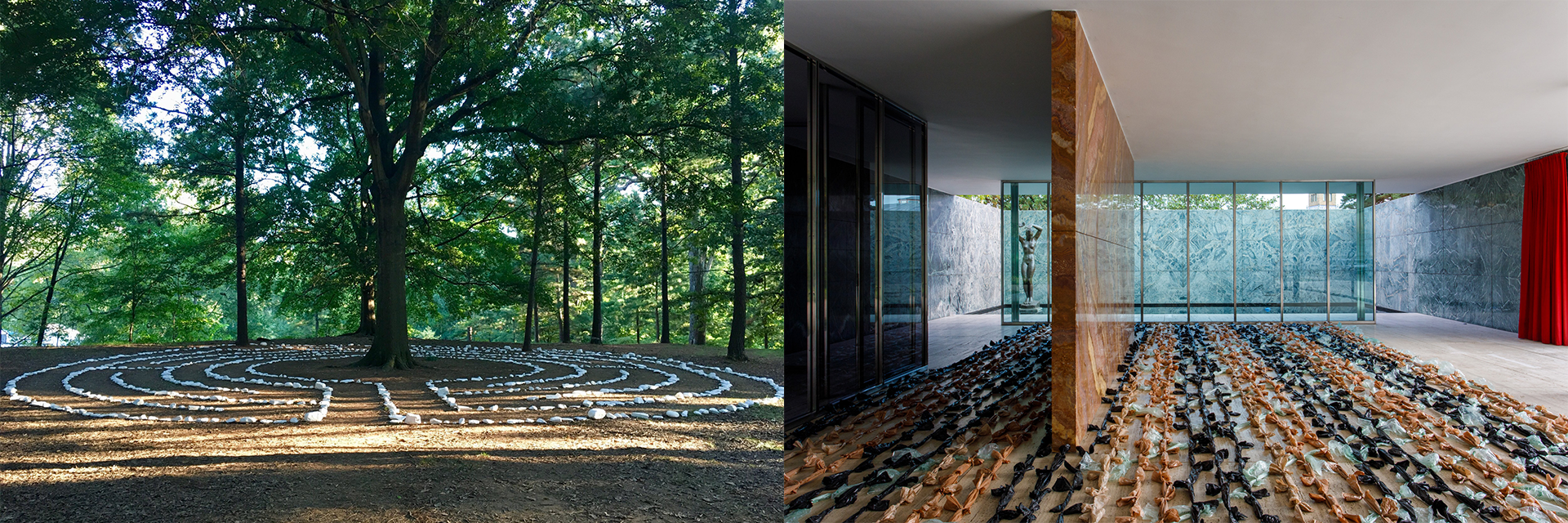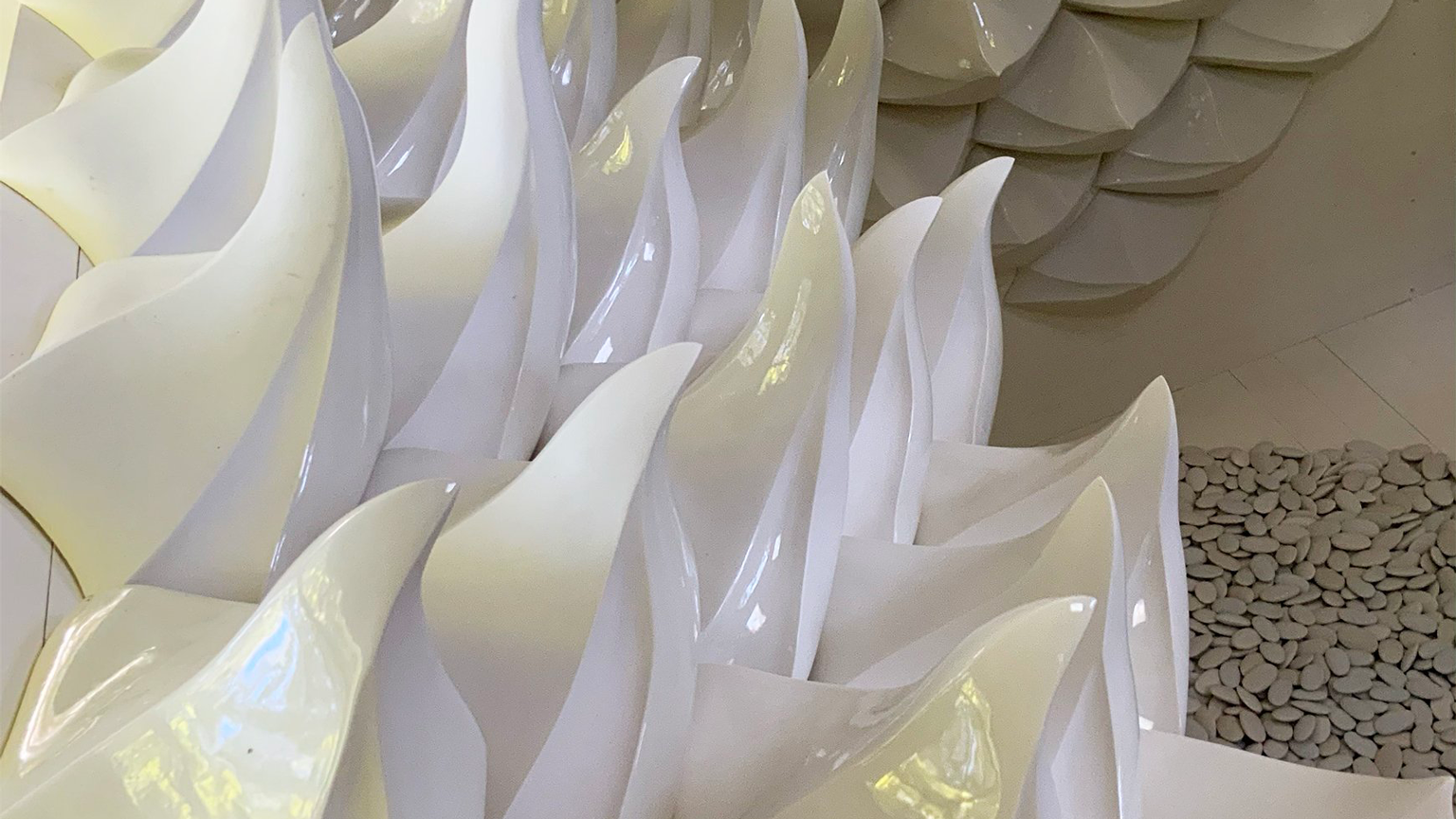
Right side: Anna Mas
Garceau, Cottle Discuss Architecture Intersections
Garceau, Cottle Discuss Architecture Intersections
Wes McRae | October 3, 2023 – Atlanta, GA
In the second lecture of its fall series, the School of Architecture featured Rachel Garceau and Associate Professor and Director of Exhibitions Mark Cottle discussing Intersections Between Architecture, Landscape, Art.
In separate talks, Garceau and Cottle each described both how they came to work in their chosen media and how they developed their latest installations. Following the individual talks, Andrew Bruno, Ventulett NEXT Generation Visiting Fellow and author of One House per Day, moderated a discussion with Garceau and Cottle.
Elevating Mundane Objects via Porcelain

For Garceau, a love of clay developed into mold-making. "I was able to build objects in a predictable and repeatable way," Garceau said, "and I was freed from the circle which I was tied to working on the wheel."
Over time, Garceau began to experiment with mundane or found objects reimagined in porcelain. Installations have featured umbrellas, stones, sticks formed into a nest, and shapes inspired by pine cones.
A pine cone in California prompted Garceau to wonder what it would feel like to be inside a pine cone flipped inside out. At the Shed Space at White Space in Atlanta, Garceau covered the walls in curved porcelain points inspired by the pine cone and the floor in porcelain ovoids similar to river pebbles. "I could bring people in and surround them, ask them to take off their shoes, touch the material, hear what it sounded like."
"I'm taking something ordinary I find intriguing and bringing it into a place almost like preciousness," she said.
Exposing the Cost of Consumption

Cottle's installations have roots on a trip to rural China. "I was entranced by these curtains hanging in the doorway of a lot of the shops," he said. "They were made from paperclips and candy wrappers."
Cottle went on to create pieces using various mundane, often disposable objects, such as flight safety cards, calendars, and security envelopes. "In the kitchen of a friend of mine, helping her put away the shopping, I watched her fold each bag into a triangle," he said. "I was delighted that I could start to play with them, stack them, and move them into patterns. I started looking for a way to string them together."
"But I was starting to struggle with the fact that my work seemed trapped in the confines of the galleries," Cottle said. "I was very happy to be invited to make interventions at the Neutra House in Los Angeles and then the Mies van der Rohe Pavilion in Barcelona, where I could interact with very important and beautiful works of architecture."
"I sought to draw the aesthetics and technologies of the early modern period into conversation with materials of our own time," Cottle said. "The plastic bag epitomizes the callously wasteful, disposable culture that surrounds us."